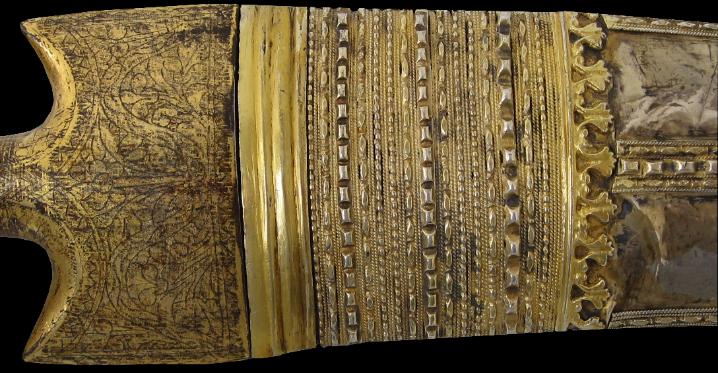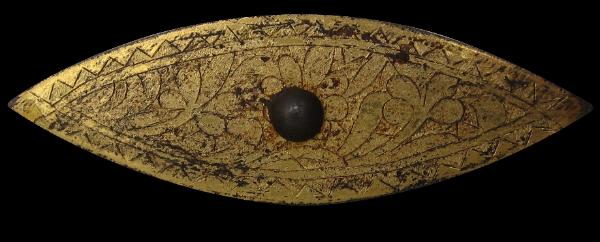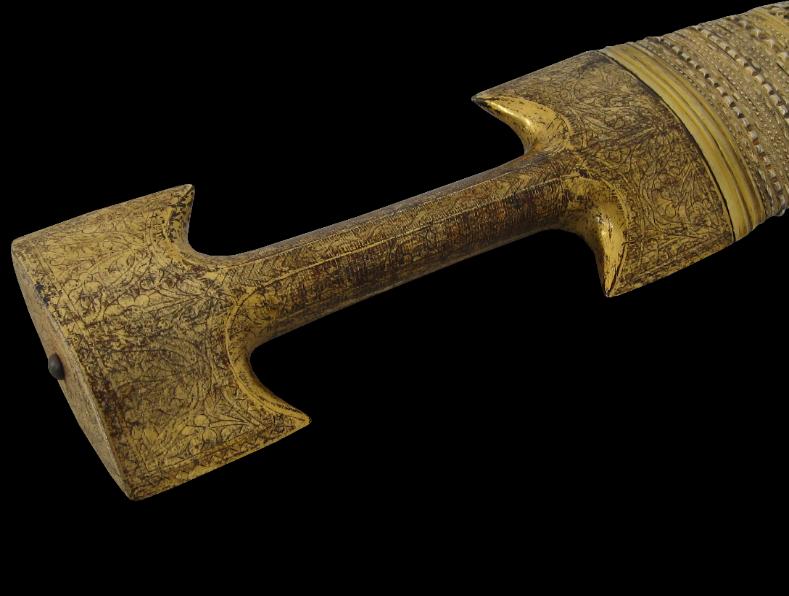This khanjar (or kanjar –in Arabic it means simply a ‘knife’ or ‘dagger’) is of Ottoman Turkish manufacture – probably it was made in an area of Turkey close to the Balkans – and it shows obvious Balkans’ influence.
It comprises a curved double-edged finely watered steel blade with a prominent medial ridge, a scabbard sheathed in gilded silver and a hilt finely decorated in etched floral gold leaf work.
The scabbard is of meticulously worked gilded silver. The upper section has multiple bands of beaded, plaited and filigree work. The middle section has been left plain, and the lower section is worked to give the appearance of tight twisted wire bands, narrowing to a bud-like tip.
Elgood (2009, p. 253) illustrates a similar khanjar with an ivory hilt but with a similar blade and an almost identical scabbard. The Elgood example was in the possession of Prince Ioannes Karatzas (1760-1845) of Greece and at one point the Ottoman ruler of Wallachia.
Khanjars of similar form and attributed to around 1800 are illustrated in Skott (1989), and in the collection of the Tsarskoye Selo Palace near St Petersurg, and illustrated in Arsenal of Tsarskoye Selo (2000). Also see Elgood (2009), and Stone (1961).
References
Arsenal of Tsarskoye Selo: One Hundred Subjects from the Collection of the Russian Emperors, St Petersburg Publishing House Baltica, 2000.
Elgood, R., The Arms of Greece: And her Balkan Neighbours in the Ottoman Period, Thames & Hudson, 2009.
Skott, O., ‘H. Bronse Hansens Vabensamling’ in Vaaben-Historiske Aarborger, XXXV 1989.
Stone, G.C., A Glossary of the Construction, Decoration and use of Arms and Armour in all Countries and in all Times: Together with some Closely Related Subjects, Southworth Press, 1961.







